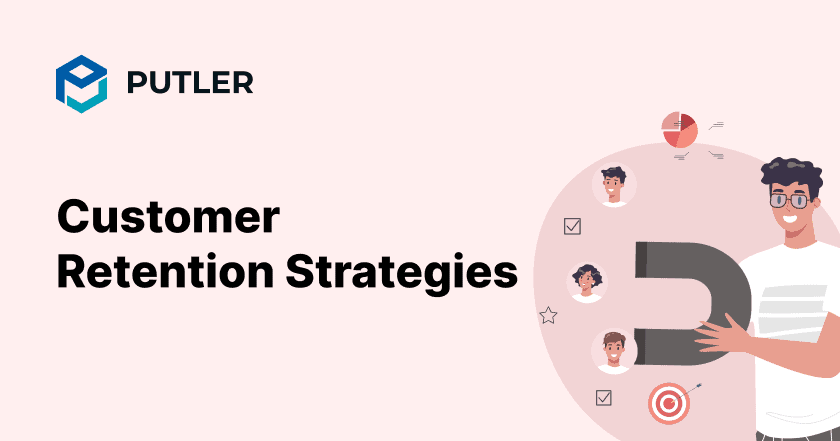You know what they say, it’s cheaper to keep a customer than gain a new one.
But how exactly do you keep customers coming back? That’s a million-dollar question.
The answer is by implementing tested customer retention strategies.
So without further delay let’s start this insightful journey.
The tried and tested customer retention techniques worked for the big brands out there.
What is customer retention?
Customer Retention is a measure that shows how many customers remain with your company over a long period. It shows your ability to encourage customers to buy more and spend more on your products over time.
But why is customer retention important? What impact does a high customer retention rate have on your revenue? Let’s discuss this in detail.
Why is customer retention important?
Loyal, long-term customers are the lifeblood of any business.
It costs five times more to acquire a new customer than to keep an existing one. This means customer retention is a key to business success.
- Higher lifetime value: When a customer sticks longer with your brand they tend to spend more. Long-term customers are also more inclined towards trying new products/services.
- Increased loyalty: High value and more engagement increases customer loyalty. Loyal customers are unlikely to switch to a competitor based on price alone.
- Word-of-mouth marketing: Happy customers are your best marketers. They spread the word about your brand to their social circle.
- Improved Profitability: 20% of loyal customers are responsible for 80% of the revenue of a business. This means more loyal customers equal to long-term profits.
- Opportunity for Upselling/Cross-Selling: Existing customers are more receptive to additional offerings, making it easier to upsell or cross-sell complementary products or services.
So focusing on Customer retention strategies creates a loyal client base. This allows businesses to flourish even in challenging economic conditions.
But what are the customer retention strategies? Let’s find out.
Best customer retention strategies
Build customer loyalty
Have you seen endless lines before the Apple product launch? People have this craze of getting a new iPhone as early as possible.
When one of the world’s biggest companies relies on loyal customers your business is no exception.
Coming to the point here are some tested ways to build loyalty.
- Offer an amazing customer experience: Deliver exceptional customer experiences like Apple does by focusing on product design, usability, and even the unboxing process.
- Stay in regular contact: Reach out to your customers via social media, newsletters, and other channels. Share content such as blog posts, behind-the-scenes, or special offers.
- Create a loyalty or rewards program: Have you heard about positive reinforcement? It’s about rewarding desired behavior to encourage repetition. Offer incentives like a points system to keep customers coming back for more.
For example, Starbucks has one of the most successful loyalty programs globally.
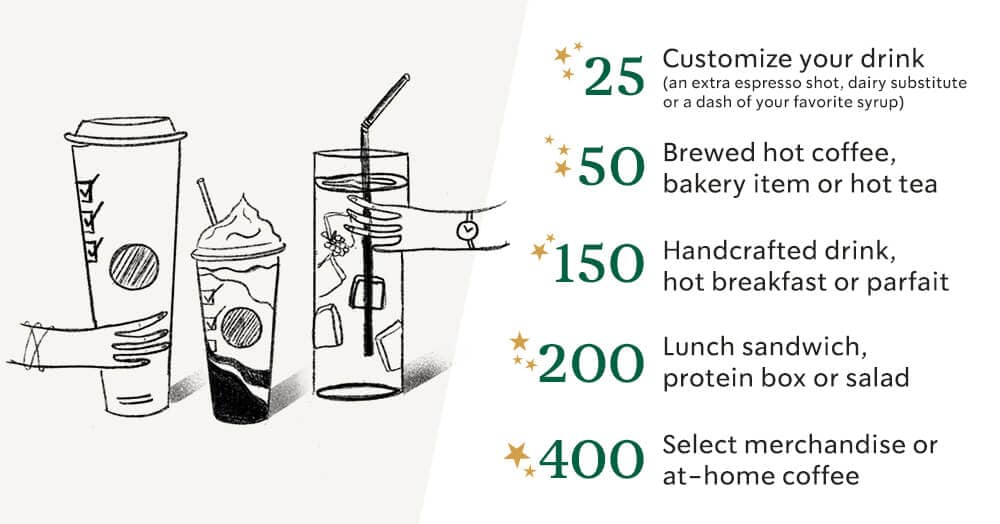
If you’re part of the Starbucks loyalty program, every time you buy something, you get stars.
And guess what? You can swap those stars for free drinks later on. once you’ve collected 50 stars, you can grab a free coffee.
Building loyalty is one of the best customer retention strategies. But all your hard work can go sideways with disappointing customer support and a long waiting period.
Provide top-notch customer support
Customer support is the bread and butter of customer retention strategies.
And if there’s ever an issue, responsive customer service will turn frustration into loyalty.
So here’s how you can leverage your customer support to turn customers loyal.
- Answer questions quickly: Customers expect fast responses. Aim to reply to emails, and social media messages, and chat within a few hours. For urgent issues, set a response time of 30 minutes or less.
- Solve problems efficiently: Train your team to resolve issues on the first contact. Also teach them how to listen properly, acknowledge their problem, understand the root cause, and act as swiftly as possible.
- Go above and beyond: Surprise your customers with little extras, like free shipping or discounts on their next order. These small gestures demonstrate your appreciation for their business and relationship.
Here’s a great example: MemberHub is a great platform for raising funds and setting up eCommerce stores.
When you contact them, they promptly send an email. They begin by expressing gratitude, showing they care.
Plus, they offer solutions, useful links, and even schedule calls to ensure you receive full support.
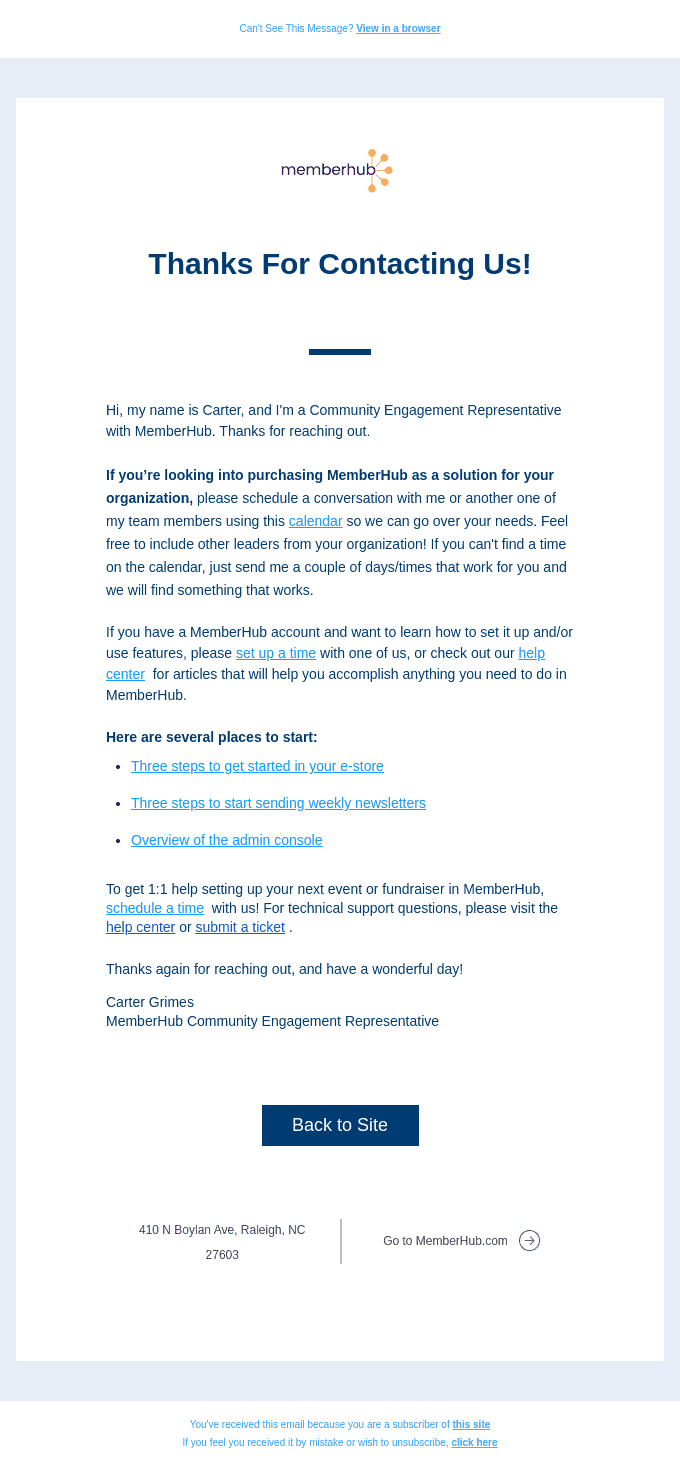
To excel at these strategies for customer retention focus on providing fast and helpful service.
Now let’s discuss another important strategy which is the customer onboarding process.
Implement a customer onboarding process
Implementing a thoughtful onboarding process is a great way to increase retention.
Onboarding is the first experience that a customer has with your product or service. You can welcome them, inform them of key features, and engage them right away.
Here are a few tips to create an onboarding experience for your customers that will wow them:
- Begin with a warm greeting: Send an email, or a message within 24 hours after signing up to thank them for their business. Also, give a brief overview of what is next.
- Hold their hand: Show customers how to use the product or service. To teach the basics, use tooltips, videos, tutorials, or live chat. Make it easier for them to start.
- Highlight key benefits: Inform customers of the most compelling and important features or services. Explain how they can help solve problems or meet needs.
- Set milestones and objectives: Early success and quick wins are important for customers. Give customers checklists, challenges, or milestones to work toward. Reward and recognize customers who achieve their goals.
Let’s take Spark, a smartwatch brand, for instance. They start with a friendly greeting, then show you a full video of how their product looks and works. They also highlight the key benefits of choosing Spark smartwatches.

Check out more email onboarding examples for a clear understanding.
From day one, focus on educating and engaging your customers cause there are no greater customer retention strategies than adding value.
Build effective educational resources
Knowledge is power but who says learning can’t be fun? Create educational content so engaging, your customers will binge-watch it like their favorite Netflix series.
- Create educational resources aligned with your client’s interests. For example, if you sell accounting software, prioritize topics like bookkeeping, cash flow management, and financial report preparation.
- Keep your content short and scannable. Nobody wants to read a blog post with 5,000 words. For a blog, aim for 500-1,000 words, and for a video, 2-3 minutes.
- Use bullet points, images, and bold text as headings to help you break up your content. Consider “gating” premium content behind an email sign-up form.
- Keep up with the latest trends in content and new media, such as podcasts, virtual summits, or livestreams.
- Host live or pre-recorded webinars and online courses. For example, run a 6-week course on productivity tips using your software.
- Don’t overlook simple resources like FAQs, how-to guides, and step-by-step tutorials.
Run surprise appreciation campaigns
Ever been delighted by an unexpected gift or thank-you note? That’s the magic of surprise appreciation campaigns. They create moments that customers will remember and talk about.
Here’s how you can implement this strategy effectively:
- Send unexpected freebies: Surprise your loyal customers with a free product sample, branded merchandise, or a small gift. For instance, a bakery could deliver a free dessert to frequent customers during the holidays.
- Write personalized thank-you notes: Handwritten notes or personalized emails go a long way in making customers feel valued. For example, a fitness trainer could send a thank-you message along with tips tailored to a client’s progress.
- Celebrate customer milestones: Recognize anniversaries, birthdays, or even the first purchase anniversary. Offer a small discount or a special offer as a token of appreciation.
- Feature customers in your campaigns: Highlight your most loyal customers on social media or in newsletters. Share their stories and show your gratitude for their support.
- Offer surprise upgrades: If you’re a subscription-based business, give customers a free upgrade for a month. For instance, a video streaming platform could offer a month of premium access to its loyal users.
For example:
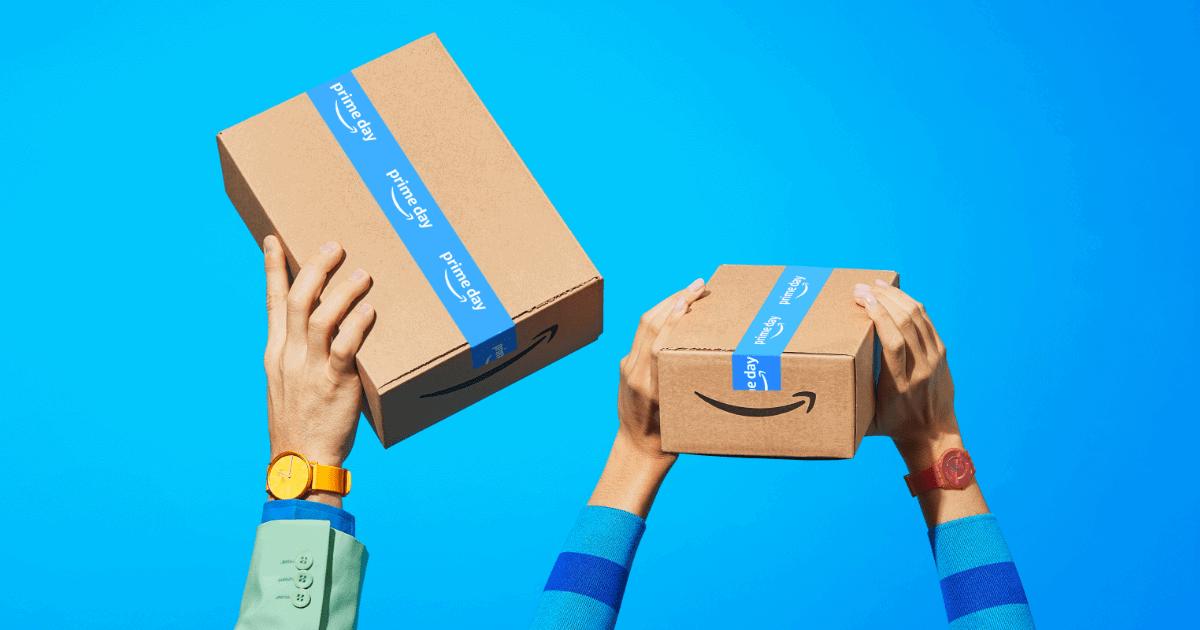
Take Amazon Prime Day—while it’s a major sales event, Amazon also uses it to reward Prime members with exclusive discounts and benefits. This not only drives loyalty but also makes members feel special.
Surprise appreciation campaigns spark joy, strengthen emotional connections, and keep customers coming back. The best part? These campaigns can fit businesses of all sizes, creating a win-win for both you and your customers!
How to improve customer retention with Putler?
Make customer retention as easy as ABC. Putler is an analytics tool that can help you with SaaS customer retention and much more.
Practical ways you can use Putler to retain your customers:
Be proactive – Identify the customers at risk of leaving your product/solution
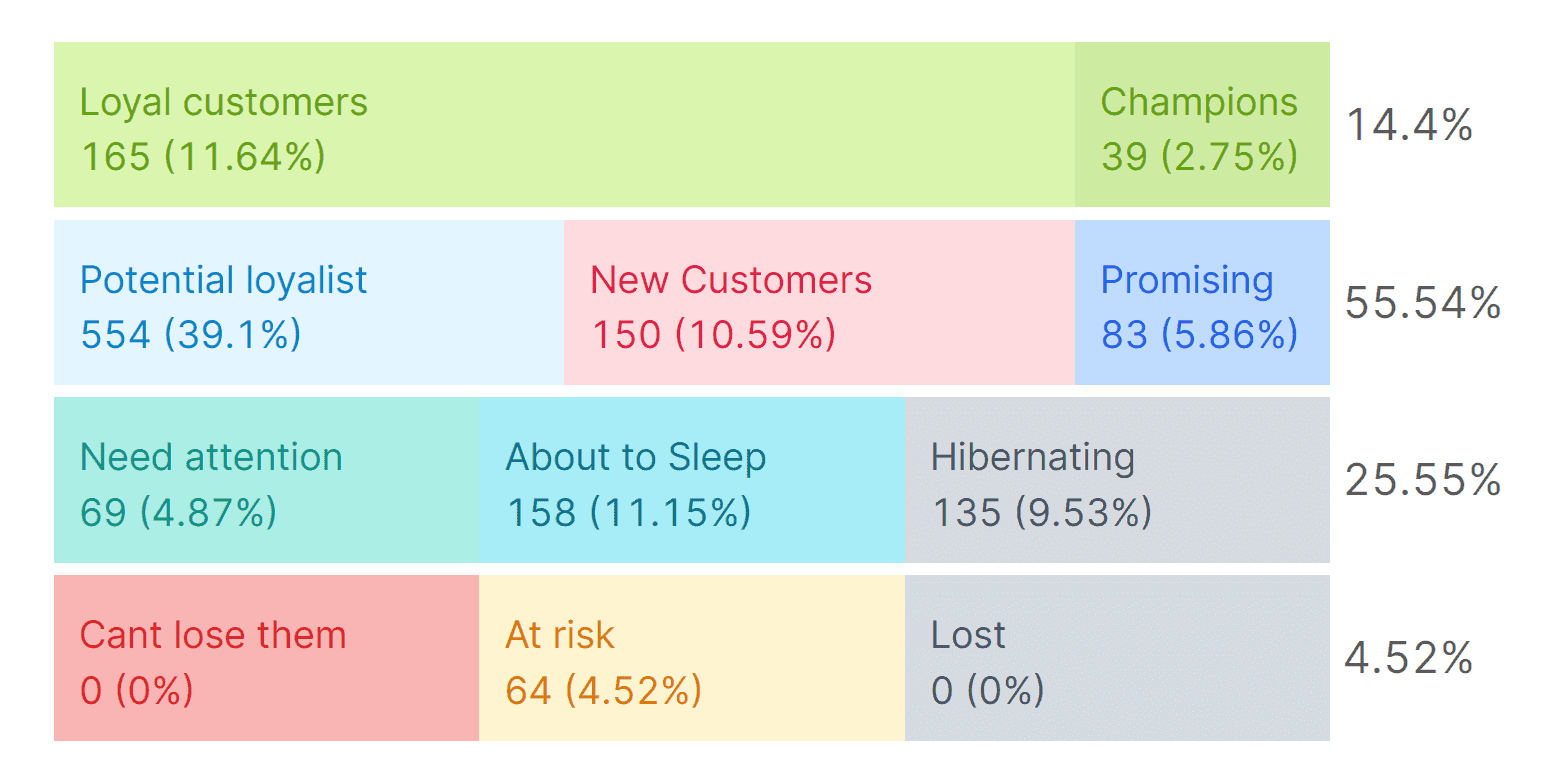
With RFM, you can pinpoint new customers, identify potential loyalists, and even detect those who might need some extra attention or are at risk of leaving, all in the blink of an eye.
You can instantly export these segments as CSV. Then proactively run targeted campaigns to effectively engage and retain these segments.
For example:
For the loyal customer segment, you can send loyalty discounts, stay-in-touch emails, special one-on-one calls, priority access to support, etc.
Since these emails are hyper-targeted for the loyal segment, they help in building long-lasting relationships, ultimately contributing to higher customer retention.
Diverse filters
You can identify specific customers with advanced filters like location, products, revenue, and customer type.
For example –
- See how many high-spending customers haven’t returned in the last 3 months using the ‘Total Number of Orders’ and ‘Date Range’ filters and lure them back in with discounts and rewards.
- Identify new customers with the ‘New Customers’ filters and send them onboarding emails.
- Apply “Revenue Contribution” to identify top spenders and give them freebies, free shipping, VIP access, or a personalized thank you note.
These strategies will work wonders for boosting your retention rate sky-high.
Make bundles
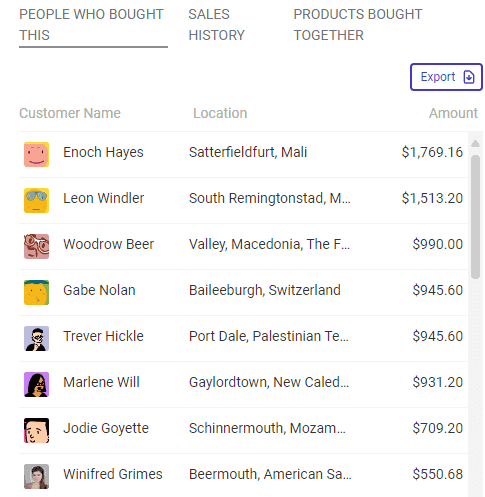
Choose your top-selling product and product bought together. Then you can make a bundle with a special discount.
These customer insights serve two purposes 1st upselling and 2nd retain customers, cause customers have both products they need with more discount.
Stay in control
Check MRR, Lifetime value, sale forecasting, revenue, churn rate, and much more.
See if your churn rate is under control. If not use effective measures to reduce it.
Send out tailored communications once you’ve identified your high-risk clients to help strengthen your relationship.
Final thoughts
As Maya Angelou wisely said, ‘People will never forget how you made them feel.’
Customer experience is a deal breaker when it comes to the eCommerce customer retention game.
Finding the right combination of customer retention strategies is a key to long-term success.
Don’t hesitate to experiment and let your creativity flow freely.
Just make sure you track the results to know what is working and what’s not.
FAQ
How do I measure customer retention success?
You can measure customer retention using key metrics like customer retention rate (CRR), churn rate, customer lifetime value (CLV), and repeat purchase rate. These metrics highlight customer loyalty and engagement levels. Tools like Putler can simplify tracking and analysis, offering additional actionable insights for improving retention strategies over time.
What are some common mistakes to avoid in customer retention?
Avoid neglecting customer feedback, as it can lead to unresolved issues. Poor post-sale support, lack of personalization, and overemphasis on customer acquisition while ignoring existing customers are other pitfalls. Also, failing to innovate or adapt your strategies to changing customer needs can result in lower retention rates.
How often should I review my customer retention strategies?
Reviewing strategies quarterly is a good practice. Regular reviews help identify what’s working, spot gaps, and adapt to customer behavior changes or market trends. Use customer feedback, performance metrics, and competitive insights to refine your approach and ensure your strategies stay relevant and effective.
What’s the difference between customer retention and acquisition?
Customer acquisition focuses on attracting new customers through marketing campaigns and outreach. Retention, on the other hand, ensures existing customers remain engaged and loyal, often through superior service, personalization, and consistent value delivery. While acquisition grows your customer base, retention secures long-term profitability.
Can offering discounts alone improve customer retention?
While discounts are great for short-term engagement, they aren’t a sustainable strategy for retention. Retaining customers involves offering consistent value, excellent customer experiences, and trust-building interactions. Discounts should complement broader efforts like loyalty programs, personalized service, and addressing customer needs effectively.
